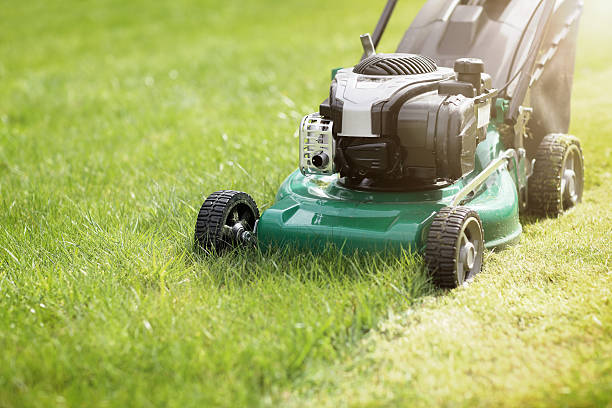8 Tips for Choosing the Best Push Mower
If you’re in the market for a new push mower, finding the best fit can make a huge difference in how you tackle your lawn care. But with so many options out there, from sleek, manual designs to feature-packed electric models, it can be a little overwhelming figuring out what matters most. To help you out, here are eight practical tips to guide you through picking the right push mower, whether you’re after low-maintenance mowing or something with a bit more power.
1. Match the Mower Type to Your Lawn Size
Not every mower works well on every lawn. The size of your yard will play a big role in determining what kind of push mower you need. For smaller lawns (about a quarter-acre or less), a classic push reel mower or a basic electric mower is typically enough. These are lighter, easier to manoeuvre, and often budget-friendly. For larger lawns, think about investing in a self-propelled push mower with a little more power, as it can make the job easier without requiring you to move to a full riding mower. In short, take a good look at your yard’s size and type before deciding.
2. Decide Between Gas, Electric, or Manual Power
The type of power your mower uses will affect everything from maintenance needs to overall ease of use. Here’s a breakdown:
- Gas Mowers – These are known for their power and ability to handle tall grass and tougher terrain, but they require regular oil changes, fuel, and a bit more upkeep.
- Electric Mowers – Ideal for small to medium lawns, electric mowers are available in both corded and battery-powered models. They’re quieter, more eco-friendly, and need minimal maintenance, though they may struggle with thicker grass.
- Manual Reel Mowers – If you have a small, flat lawn and enjoy a more hands-on approach, a reel mower is a sustainable option. These don’t use gas or electricity, making them completely green, but they do need some muscle power.
Choosing the right power source is essential; think about what will give you the right balance of power and maintenance requirements based on your lawn and lifestyle.
3. Check the Cutting Width and Height Options
The cutting width of your mower impacts how many passes you’ll need to make across your yard. A wider cutting deck means fewer passes, which can save time, especially on larger lawns. Cutting widths on push mowers usually range between 14 to 21 inches. If you have a small or particularly narrow yard, a smaller cutting width might actually be more efficient.
Then there’s cutting height. Many modern push mowers Perth come with adjustable height settings, so you can easily control the length of your grass after mowing. This feature can be a lifesaver if your grass tends to grow fast or if you prefer a slightly longer cut for a lush look. Aim for a mower that lets you adjust the height easily.
4. Think About the Terrain of Your Lawn
The layout and terrain of your lawn will impact which mower will suit you best. If your yard has hills, slopes, or uneven ground, a self-propelled model will be much easier to manage than a regular push mower, as it’ll provide some extra power to get up those inclines. For flat lawns, a basic push or reel mower works just fine. It’s all about matching the mower’s design to the demands of your yard.
5. Look at the Handle and Grip Comfort
Lawn mowing might seem simple, but if you’re pushing a mower for 30 minutes or more, the handle comfort makes a difference. Look for ergonomic handle designs that reduce strain on your hands and wrists. Many push mowers offer padded or adjustable handles for a more custom fit, which is especially helpful if you have a larger lawn or if you’re mowing in warmer weather. Don’t overlook this detail – you’ll be grateful for the comfort later on.
6. Pay Attention to Noise Levels
Some mowers are noticeably louder than others, and this can be a big factor if you live in a neighbourhood where noise is a concern. Generally, gas-powered mowers are louder, while electric models are quieter. Battery-powered electric mowers are particularly quiet, which makes them a good option for early morning or evening mowing sessions. Be mindful of this feature if you’re hoping to keep the noise down around your home.
7. Check for Easy Maintenance and Spare Parts Availability
Some mowers are easier to maintain than others, and this often comes down to the mower type and model. Gas mowers require oil changes and spark plug checks, whereas electric and manual mowers have minimal upkeep. No matter which type you choose, though, make sure replacement parts like blades are easy to find. It’s also a good idea to check for local service availability, as some models can be tricky to repair without specialist knowledge. Ensuring your mower is easy to maintain means it’ll last longer and stay in better condition over time.
8. Compare Mulching, Bagging, and Side-Discharge Features
Push mowers come with different grass disposal options: mulching, bagging, or side-discharge. Mulching mowers cut grass into fine pieces that are then spread across your lawn, which can add nutrients back into the soil. Bagging mowers collect clippings in an attached bag, which is ideal if you prefer a cleaner look. Side-discharge mowers eject the clippings to the side, which works well for fast mowing on larger lawns. Some mowers offer a combination of these options, allowing you to switch depending on your lawn’s needs. Decide which disposal feature suits your style before making a choice.
Ready for the Perfect Mow?
Picking the right push mower can take your lawn care to a new level of ease and efficiency. From the size of your lawn to the type of terrain and even your own comfort while pushing, every factor counts. By following these tips, you’ll be able to find a mower that fits your specific needs, making every mowing session less of a chore and more of an enjoyable routine.




